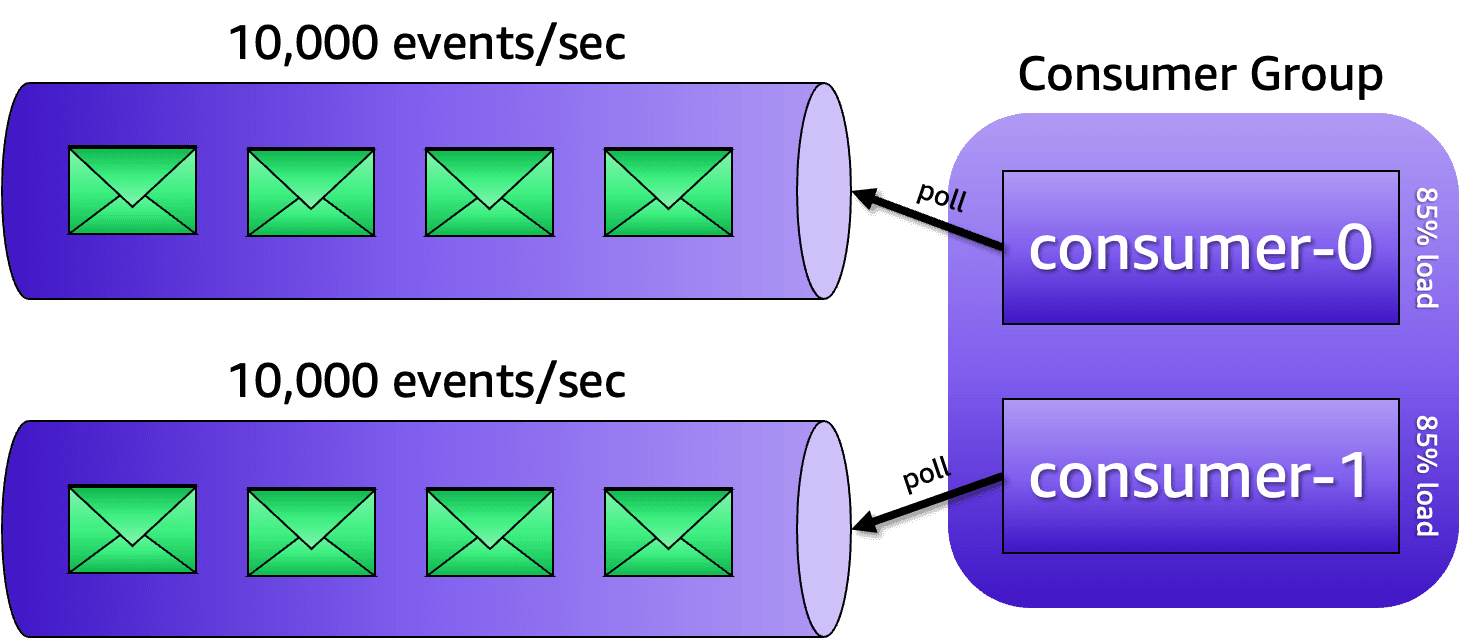Apache Kafka Partitions as a Unit of Parallelism
Learn how to right-size your partitions for your Kafka workloads


kafka-producer-perf-test and kafka-consumer-perf-test that are available in the /bin folder of your Kafka distribution. For example, to test if a partition can handle 2,000 events per second, with each event containing 1024 bytes of payload size, you can send 100,000 from a machine using this command:2022.6 events per second. There is surely a contention somewhere. It may be because of compression, network bandwidth, throttling rules from your egress NAT gateway, or maybe the machine doesn't have enough resources to achieve that throughput. The next step is to change the target throughput until you reach a number of events per second that will be constant throughout all batches sent. This will be your measured write throughput. If you know where the contention is; and if you can do something about, instead of changing your target throughput you can simply work towards fixing the issues. But in my experience, these two ifs are usually mutually exclusive.MB.sec and nMsg.sec, which tells you exactly the throughput achieved in MB/s and in terms of the number of events fetched. In this example, the machine could handle up to 6.1617 MB/s, which was the equivalent of 6310.1413 events per second. If the number of events per second fetched multiplied by the payload size came close to the MB/s number, then you are getting somewhere. Just like you did while measuring the write throughput, you must work towards reaching a number that will be constant throughout different executions of this command. As a best practice, consider that the read throughput is going to be usually higher than your write throughput. This happens because, once stored, you will likely share the same events with different systems. A good rule-of-thumb is considering that your read throughput will be 3X higher than your write throughput. Therefore, whatever number you got while measuring the read throughput, multiply it by 3 to be on the safe side.NUM_PARTITIONS = MAX(T/W, T/R)T is your target throughput, W is your measured write throughput, and R is your measured read throughput. The result is how many partitions you need for a topic. With that said, use this formula at your discretion. Also, take into account that the measured read throughput doesn't consider business logic processing. You should think about this as well.